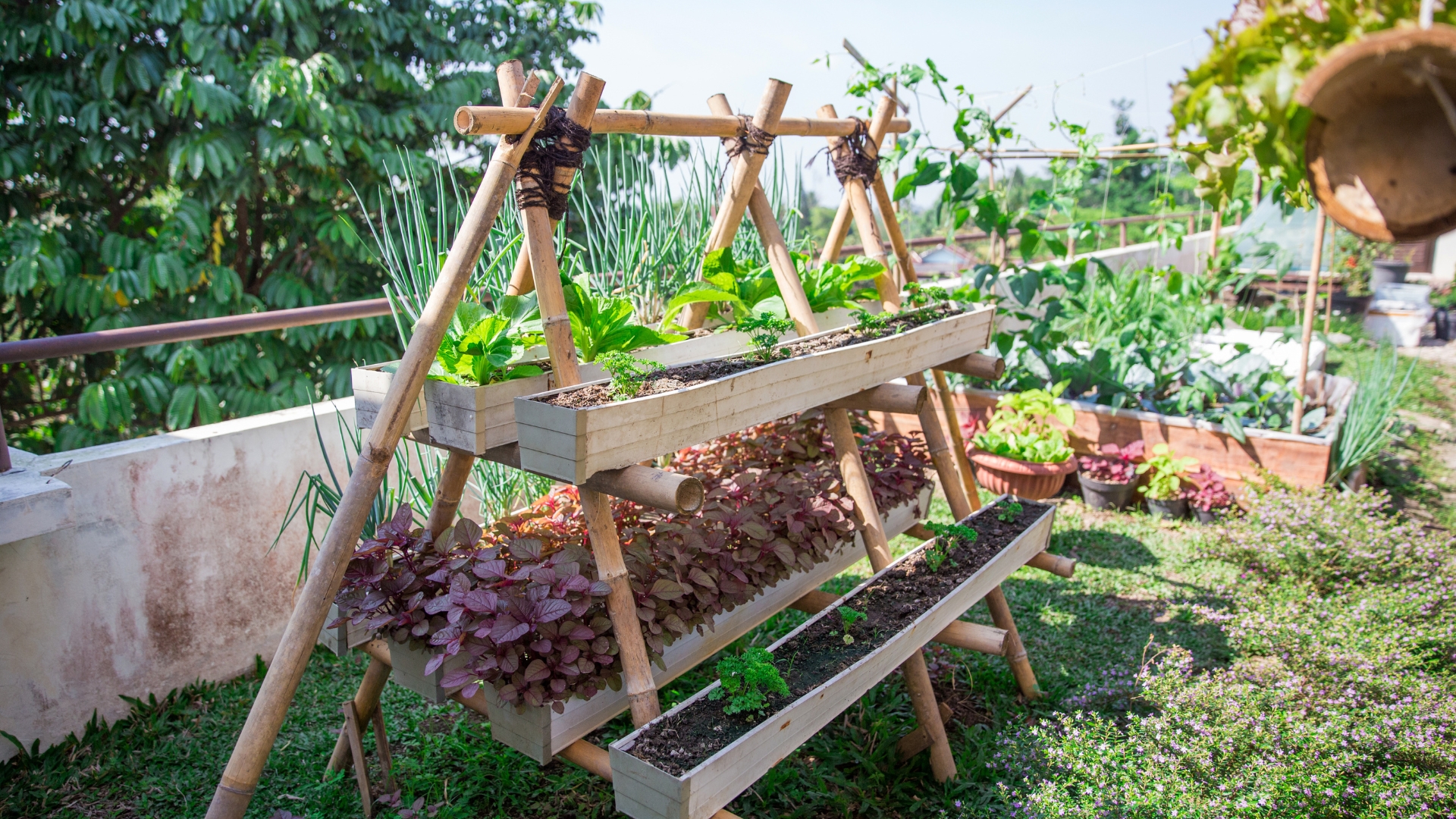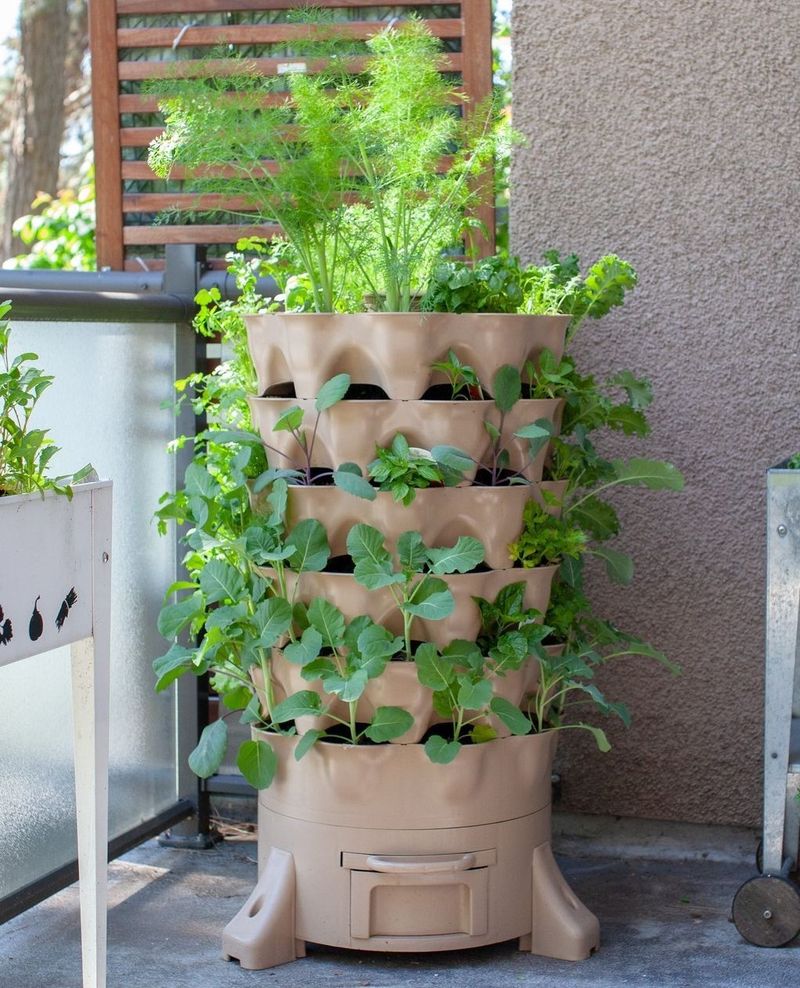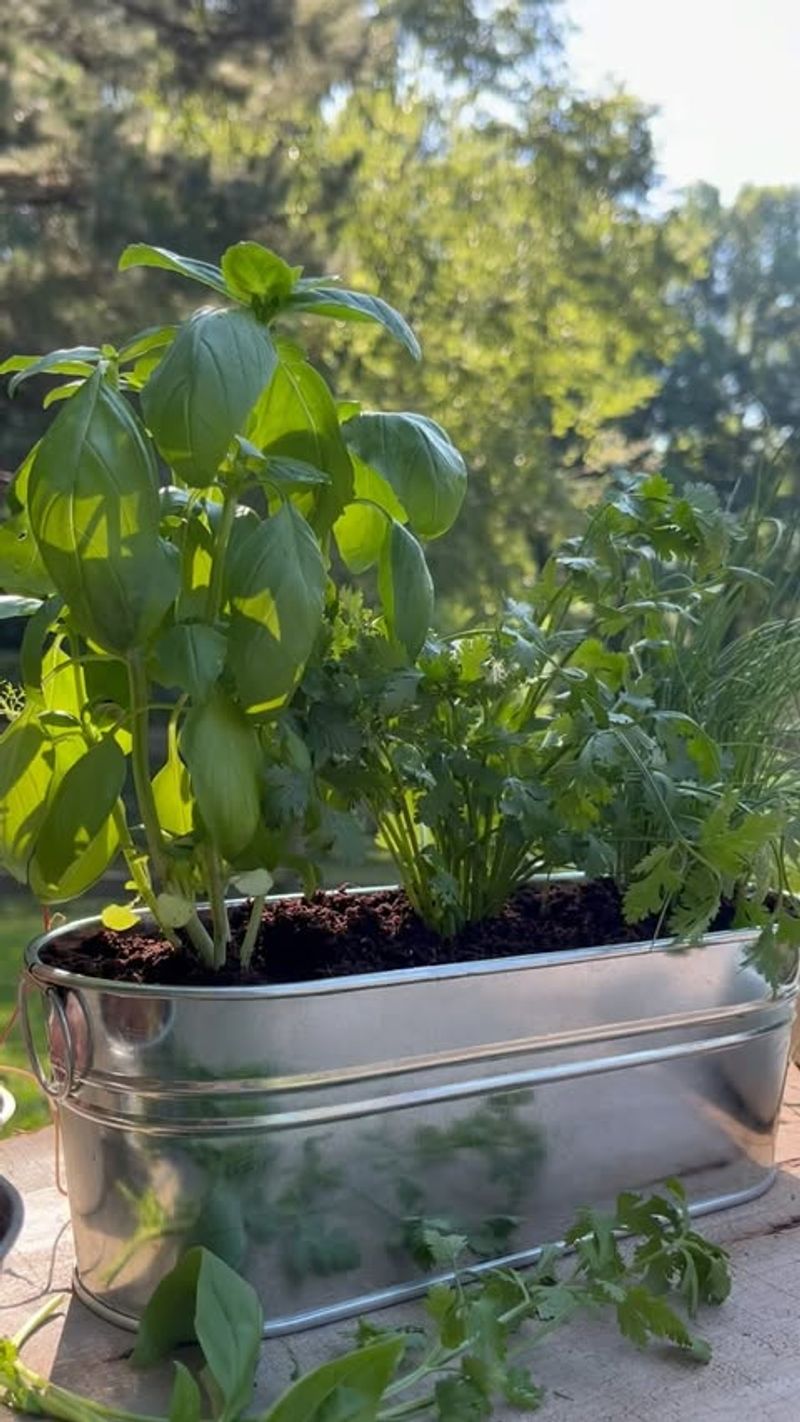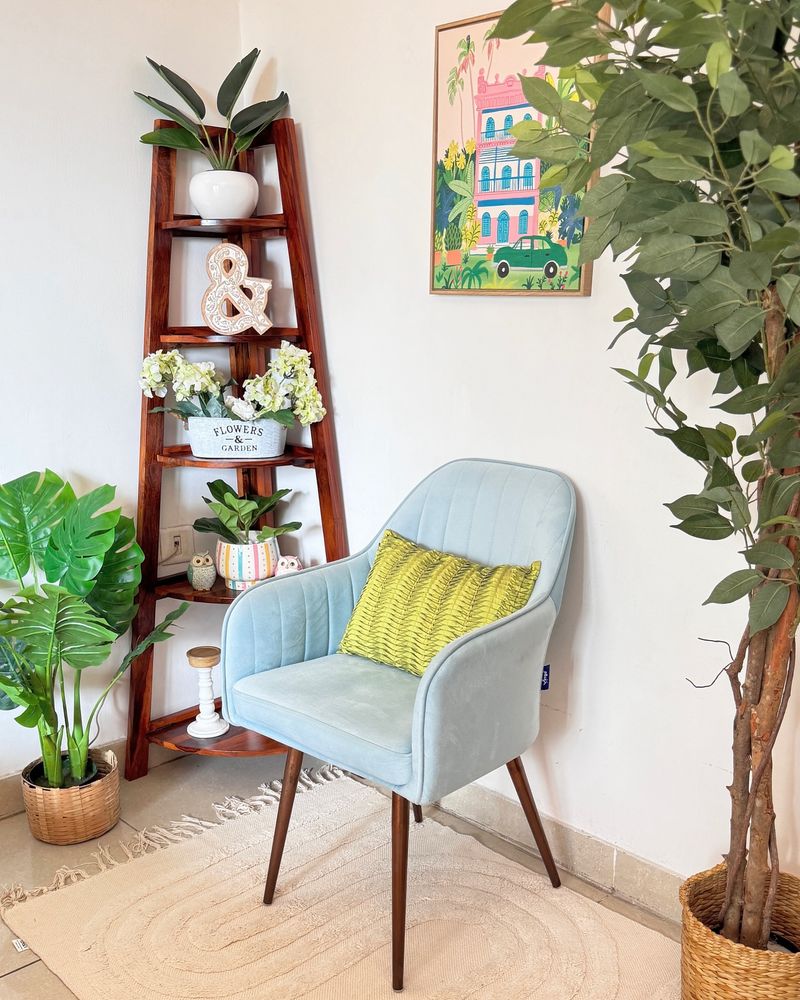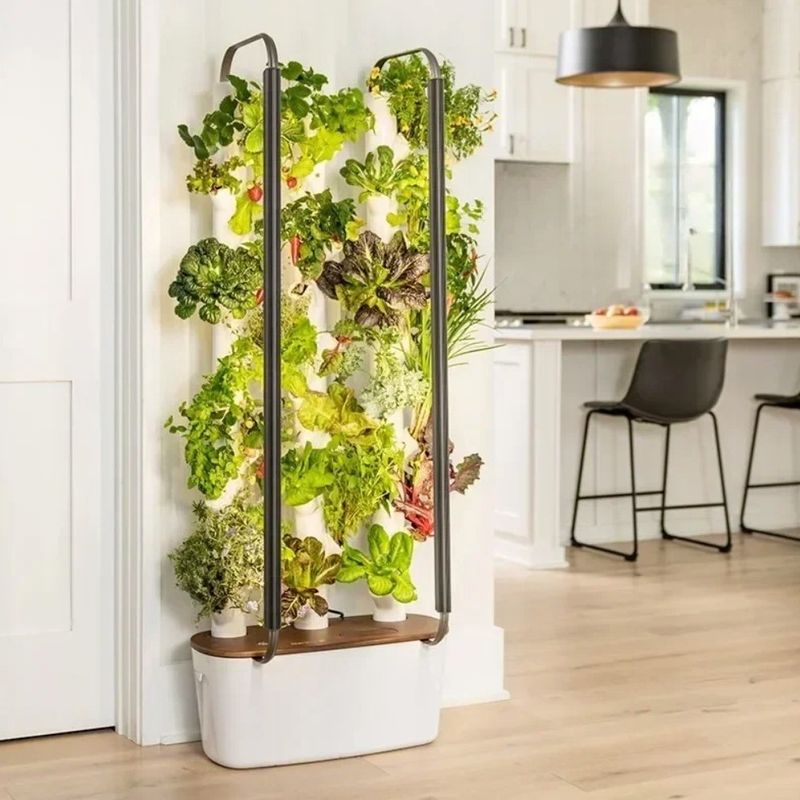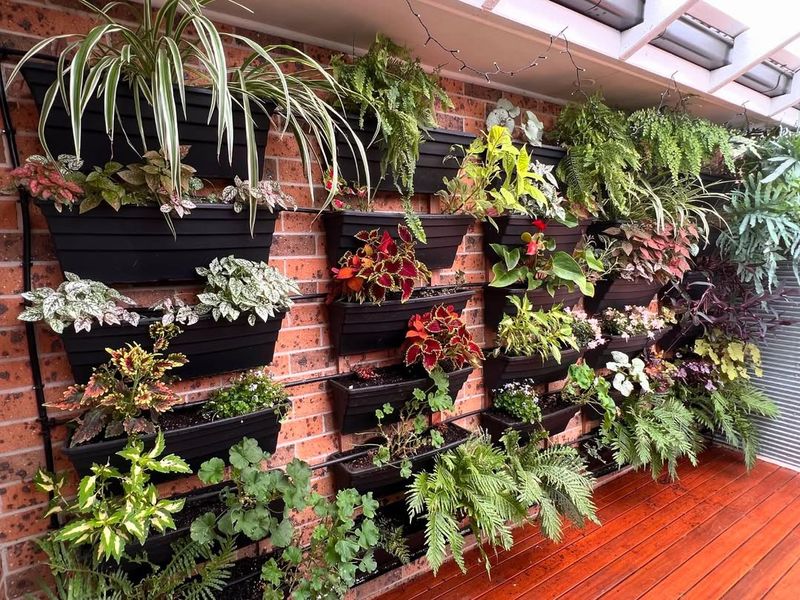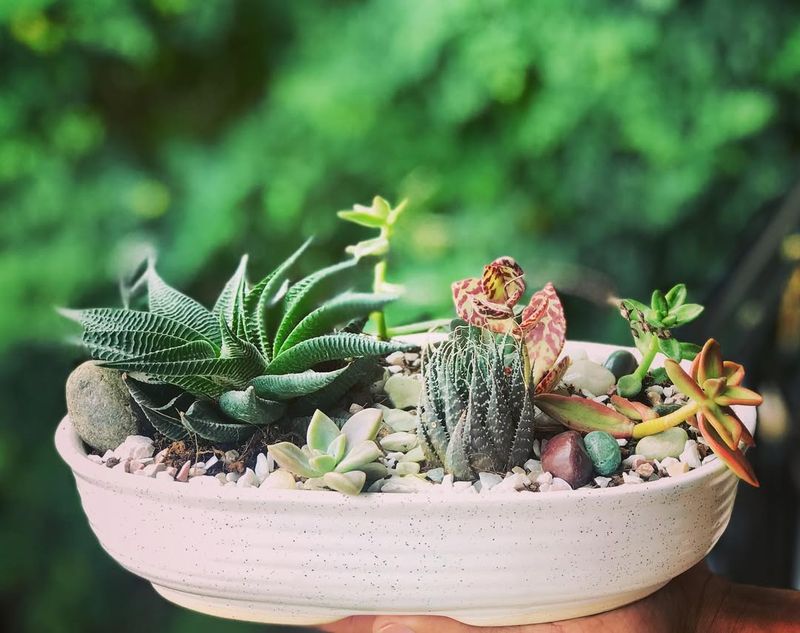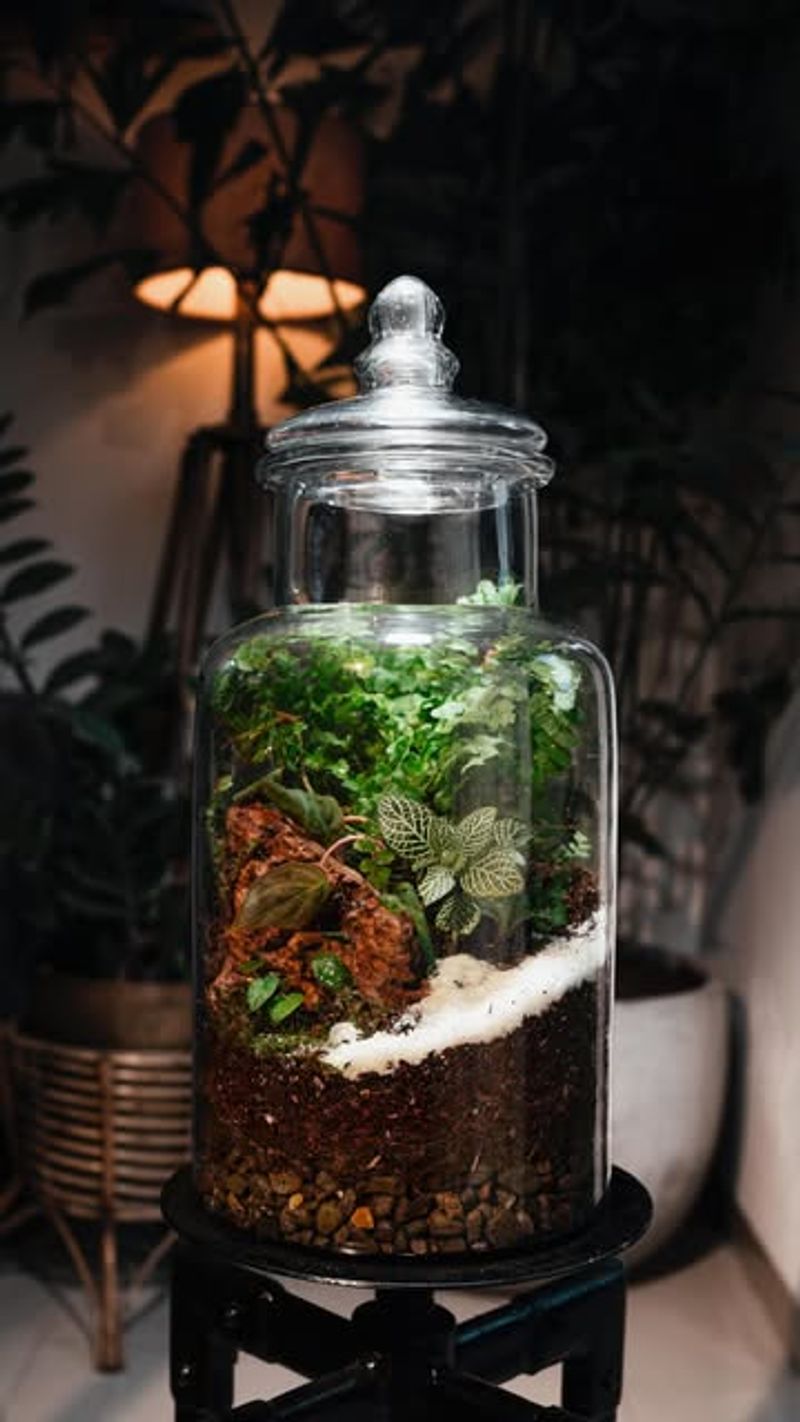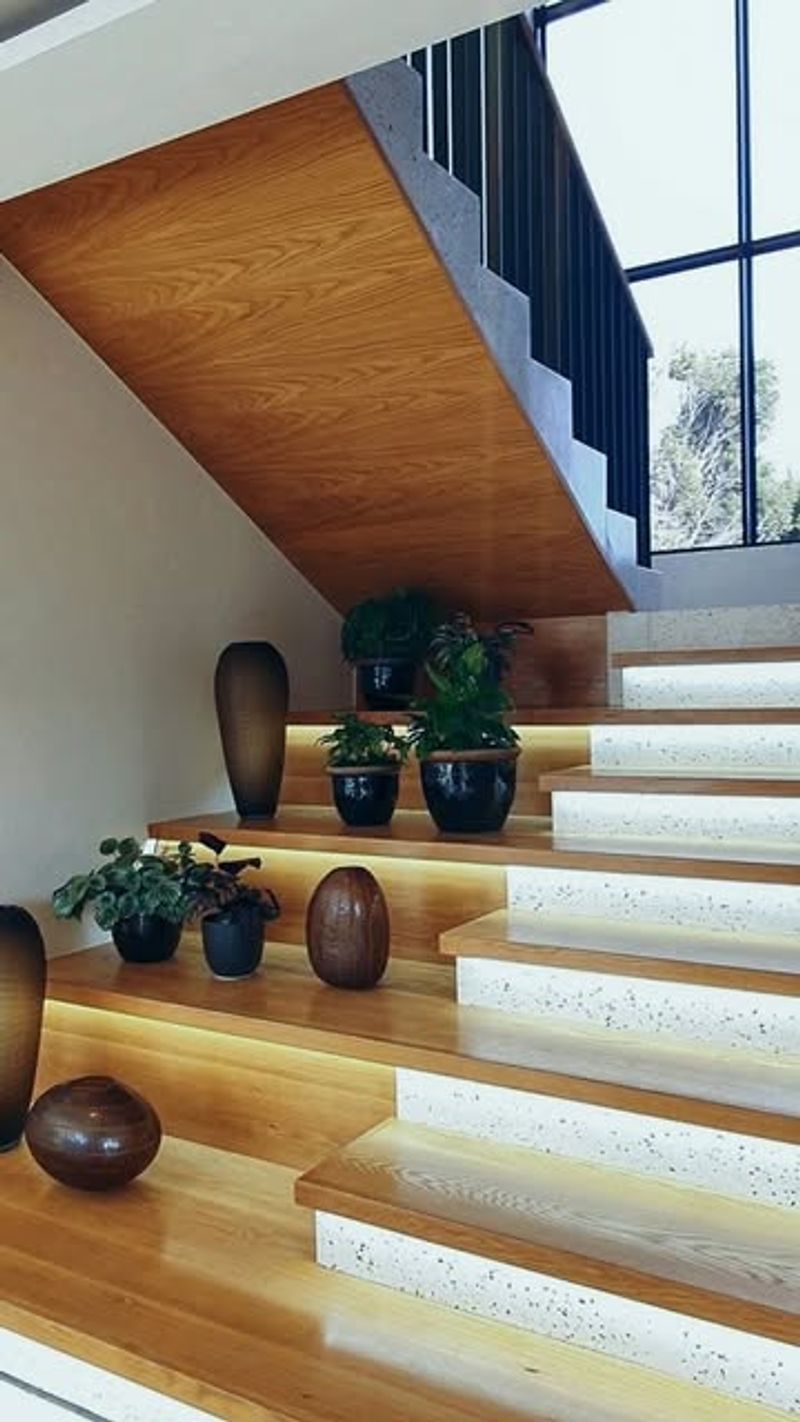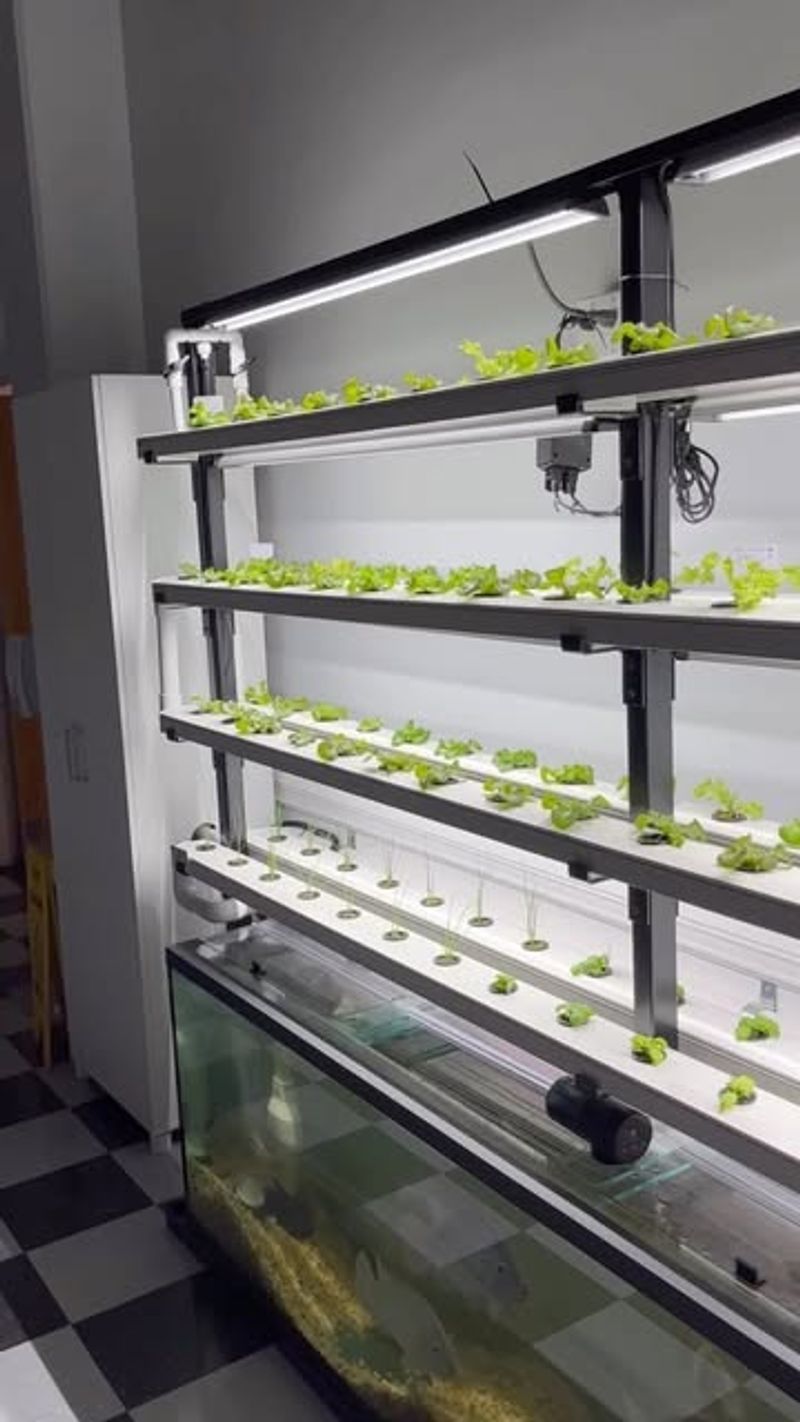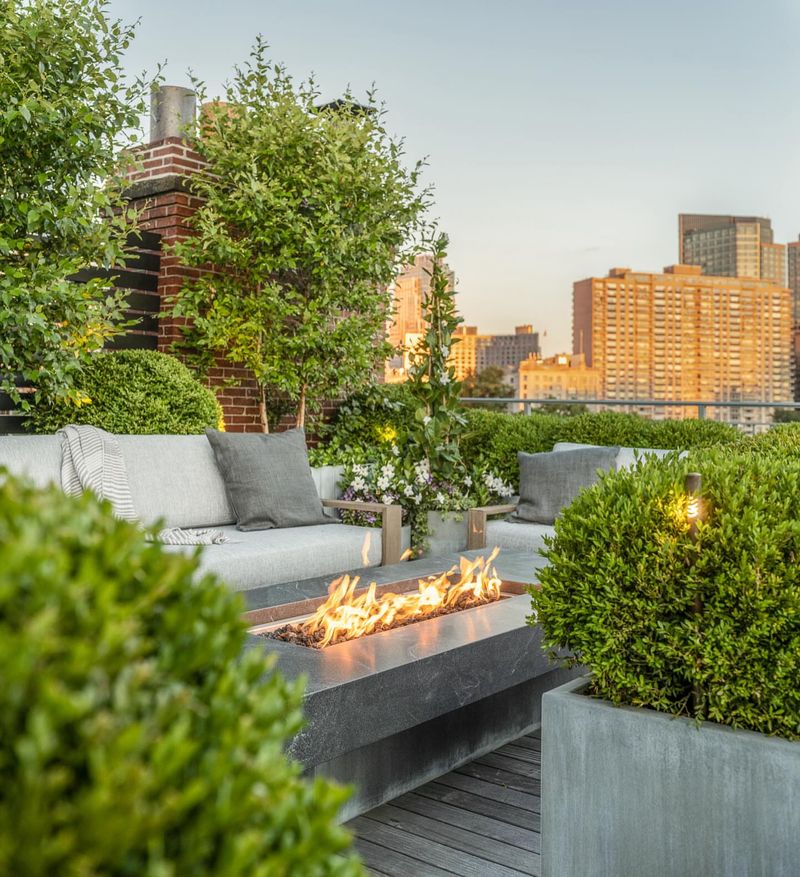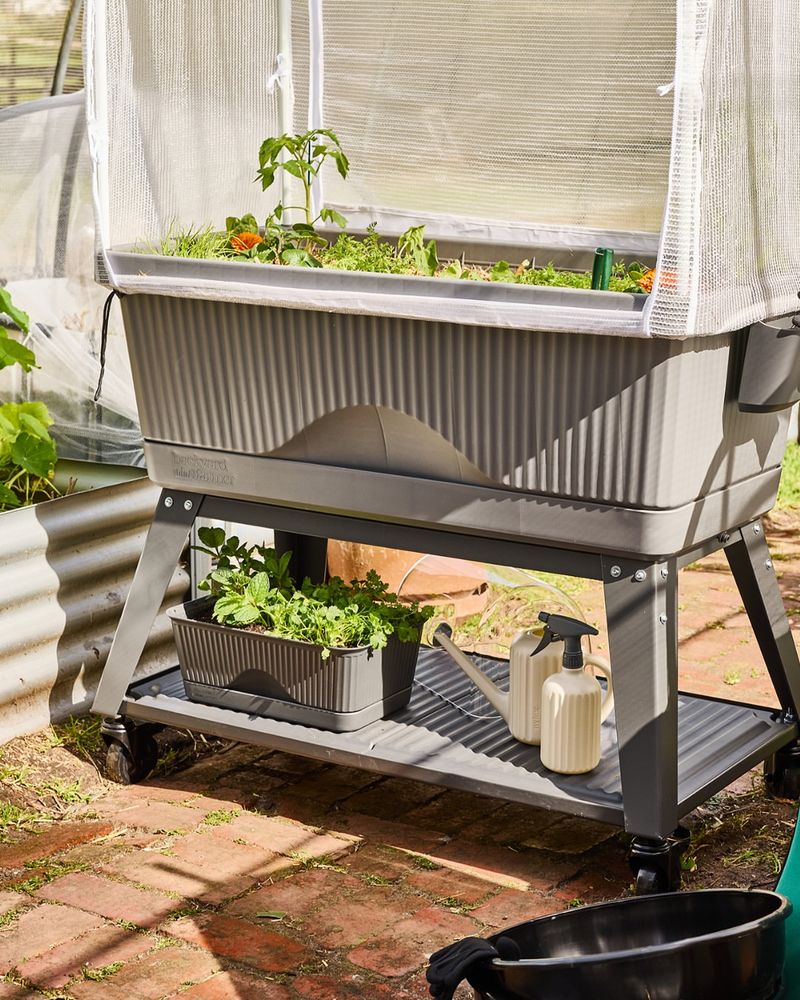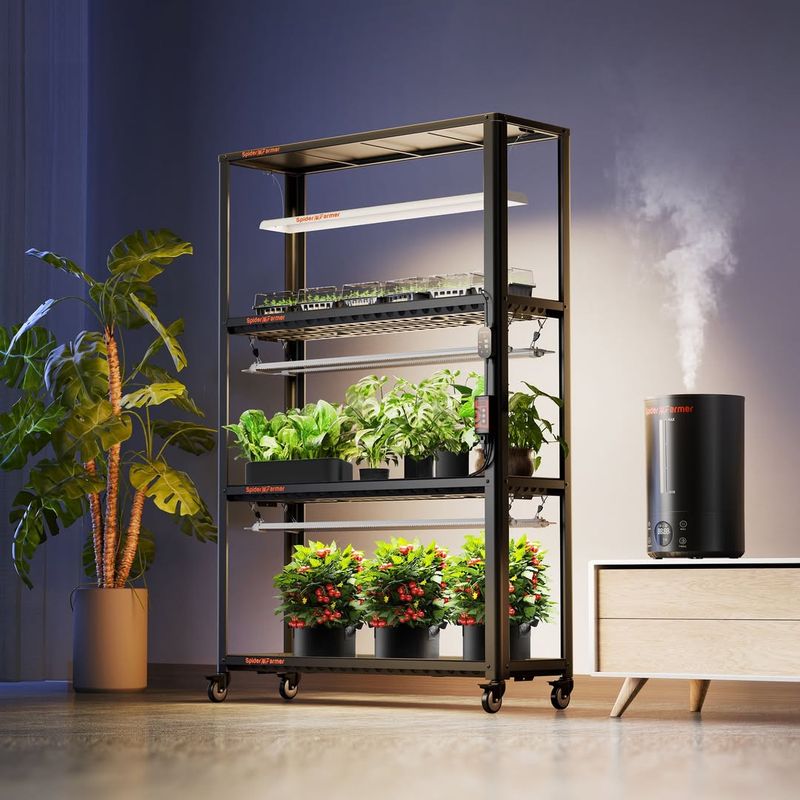Gardening might seem impossible if you live in a small apartment or have a tiny yard, but you can still enjoy growing plants with a bit of creativity. Whether you’re dreaming of fresh herbs or colorful flowers, there are ways to make the most of limited space. Discover these ingenious tips that will help you start a garden, no matter how small your space is!
1. Use Vertical Space
Maximize your gardening area by thinking vertically. Hanging planters or vertical garden systems can transform walls into lush green spaces.
These systems are perfect for growing herbs, strawberries, or small vegetables. Different levels allow you to cultivate more plants without taking up valuable ground space.
Be sure to position vertical gardens where they’ll receive adequate sunlight and water—light distribution can vary from top to bottom.
2. Container Gardening
Containers come in all shapes and sizes, allowing for flexibility in your gardening setup. They can be placed on windowsills, balconies, or patios.
Choose pots that fit your available space and the plants you wish to grow. The portability of containers means you can rearrange them to suit your needs.
Just make sure each container has proper drainage to keep roots healthy and prevent waterlogging, especially in compact spaces.
3. Window Sill Herb Garden
Even a sunny windowsill offers enough space for a thriving herb garden. Small pots of basil, parsley, or chives can provide fresh flavors for your cooking.
Herbs are easy to care for and add a touch of green to your kitchen decor. Enjoy the convenience of fresh herbs right at your fingertips.
Rotate your pots regularly to ensure even sunlight exposure and prevent your herbs from growing lopsided or leggy.
4. Hanging Baskets
Hanging baskets are not just for flowers; they can also be used for trailing vegetables like cherry tomatoes. Suspend them from ceilings or hooks to utilize overhead space.
The gentle sway of the baskets in the breeze adds a dynamic element to your garden. Be sure to use lightweight potting mix and water-retaining soil to reduce weight and help maintain consistent moisture in these elevated containers.
5. Use a Ladder Shelf
A ladder shelf provides multiple levels for planting, turning unused vertical space into a mini-garden. Each rung offers a different spot for pots of flowers or leafy greens.
This setup is both decorative and practical, fitting seamlessly into corners or against walls. For best results, place sun-loving plants on the top shelves and shade-tolerant ones lower down to ensure each plant gets the light it needs.
6. Upcycled Planters
Look around your home for items that can be repurposed into planters. Old mugs, boots, or tin cans can become unique plant containers.
This approach not only recycles materials but also adds personality to your garden. It’s a great way to personalize your planting area without spending much money.
Just be sure to add drainage holes to your upcycled containers to keep roots healthy and prevent water from pooling.
7. Hydroponic Systems
Hydroponics allows plants to grow without soil, using nutrient-rich water instead. These systems can fit anywhere and are especially useful indoors. They often require less space than traditional gardening and can yield impressive results.
The science behind it is fascinating and efficient. To get started, choose easy-to-grow plants like lettuce or herbs, which thrive in hydroponic setups and are perfect for beginners.
8. Community Garden Membership
Consider joining a community garden if there’s one nearby. These shared spaces offer plots for personal use, allowing you to grow a variety of plants. Besides, you’ll gain access to gardening tools and advice from fellow members.
It’s a wonderful way to connect with people who share your interest in gardening. Many community gardens also host workshops and events, making it a great place to learn new skills and get inspired by others’ growing techniques.
9. Balcony Railing Planters
Turn your balcony into a garden oasis with railing planters. These fit securely on railings and can hold a variety of plants.
Flowers, herbs, or even small vegetables can thrive in this setup. It’s an excellent way to add greenery to your outdoor space without cluttering the floor.
Just be sure to check the weight limits of your railing and choose planters with proper drainage to keep your plants healthy and your balcony safe.
10. Indoor Wall Planters
Indoor wall planters bring nature into your living space without taking up floor area. These can be arranged in patterns or randomly for artistic flair.
Many come with self-watering systems, making them low-maintenance. Perfect for adding a touch of green to any room in your home.
For best results, choose plants that thrive in lower light, like pothos, ferns, or philodendrons, especially if your wall isn’t near a window.
11. Tabletop Gardens
Even a small table can become a garden with creative use of space. Tabletop gardens can include a mix of succulents, cacti, or tiny flowering plants.
Arrange them as a centerpiece to bring a touch of nature indoors. It’s a simple way to enjoy greenery without needing a yard.
Use shallow containers or decorative trays for easy arrangement and add a layer of pebbles or moss for texture and visual interest.
12. Garden in a Jar
Terrariums, or gardens in a jar, are miniature ecosystems that can thrive indoors. Use glass jars to create enchanting plant displays.
They require minimal maintenance and can be tailored to fit any style. Include moss, small plants, and decorative elements for a personal touch.
Be sure to choose plants with similar light and moisture needs, and keep the jar partially open for airflow if you’re using succulents or cacti.
13. Utilize Stair Space
Stairs can be more than just a way to get from one floor to another. Use steps to display potted plants, turning them into a garden path.
This method uses existing space effectively and brings nature into unexpected places. Choose pots that fit neatly on each step for a tidy appearance.
For safety and style, stick to low-profile or lightweight containers and alternate plant heights to create visual flow without blocking foot traffic.
14. Aquaponics System
Aquaponics combines fish farming with hydroponics, creating a self-sustaining ecosystem. Fish waste provides nutrients for plants, and plants help filter the water.
These systems can be compact and fit indoors, offering a fascinating way to grow food and learn about ecological balance.
Start with hardy fish like goldfish or tilapia and easy-to-grow plants such as lettuce or basil to build a stable, beginner-friendly system.
15. Rooftop Gardening
If you have access to a rooftop, turn it into a beautiful garden. Raised beds, containers, or even green roofs can thrive here.
It’s an excellent use of space, providing fresh air and a retreat from city life. Rooftops can grow a variety of plants and even small trees.
Be sure to check weight limits, install proper drainage, and consider wind protection to keep your rooftop garden safe and thriving.
16. Portable Raised Beds
Raised beds are not just for large gardens; they can be portable, too. These moveable structures allow flexibility in placing your plants to catch the best sunlight.
They’re ideal for patios or small yards. With the added height, they are also easier on your back when tending to your plants.
For even more convenience, choose raised beds with wheels or lightweight materials to make repositioning effortless as seasons or sun patterns change.
17. Creative Light Use
Natural light is precious, but artificial lights can supplement it when needed. LED grow lights are energy-efficient and can be hung over plants to promote growth.
Even in dim apartments, these lights can create an ideal growing environment. They’re perfect for indoor gardens, ensuring your plants thrive all year round.
Set grow lights on a timer to mimic natural daylight cycles—most plants do best with 12 to 16 hours of light per day.

